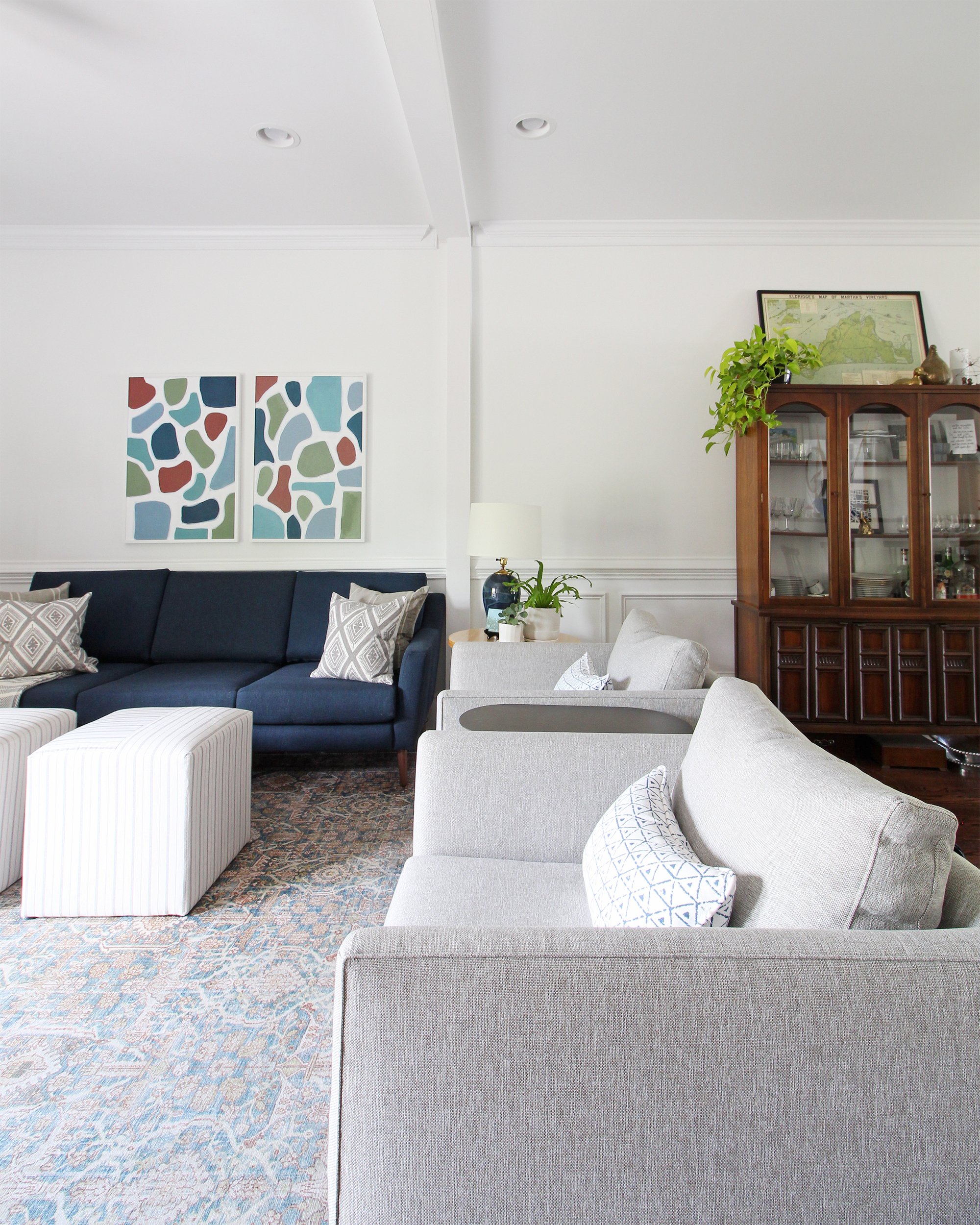5 Tips for Creating a Cohesive Home Design
When it comes to creating a home that feels put together and polished, one of the most important things to consider is cohesion. A cohesive design is one where all of the elements in a room or throughout a house flow seamlessly together, creating a sense of harmony and balance.
Whether you have an open concept home or a more traditional walled-off floor plan, you’ll want to feel like it all “goes together” if you know what I mean. Let’s walk through how to make that happen!
Here are five tips for achieving a cohesive design in your own home:
1. Choose a color scheme
One of the easiest ways to create cohesion in a room is to choose a main color scheme and stick to it. Repetition of colors and tones help a space feel pulled together and helps your eye move around the room. This includes wood tones and metal finishes as well.
A good rule of thumb is repeat a color at least twice in a room to make it feel purposeful and connected to other elements. For example, let’s say your rug has a pretty navy color as a part of the pattern. You could include a pair of navy pillows on the sofa and choose a painting for the wall that also has a similar tone.
The tones don’t need to match perfectly (in fact, a little tonal variation adds great dimension), but they should complement one another.
Start by choosing a few colors that you plan to carry throughout your home, and then you can layer in a few different accent colors in individual rooms as you see fit.
For example, above is a collage of a few photos from my home that represent my “base color scheme” (I pulled out the colors at the bottom of the image - blues, grays, and warm woods). In other places, I’ve layered in other colors like rust and green, but have carried those main colors through to add cohesion!
2. Create a visual of your style and refer to it often
Defining your style can be a journey, but spending some time figuring out what you love and want your home to look like from the start is worthwhile.
Start a Pinterest board to collect images that represent the style you want to have in your home. Trust your gut and Pin images that you absolutely love - don’t overthink it! Start by pinning 40-50 images and then go through it and cull it down as needed. You might find that your second pass through those helps you realize what you truly love.
Look for common themes or elements in those photos and use those as your guide. As you shop for your home and wonder if a particular piece is right, you’ll have your Pinterest board at the ready - refer back to it to make sure fits within your overall style goals.
3. Repeat design elements
Repeating design elements, such as a pattern, texture, or shapes, throughout a room or house can also help create cohesion.
Here are a few examples:
Choose Persian-style rugs for a few different rooms in your home
Use natural woven materials like a rattan cabinet, woven baskets, and/or sisal/jute rug in nearby spaces
Echo the shapes in a piece of art in one room with light fixtures or furniture in another
Are you seeing how this could come together? Repetition ties a room (and your entire home!) together and make it feel more polished and purposefully designed.
4. Incorporate a mix of old and new
Mixing vintage or antique and modern elements can also help create a cohesive, collected design. This might not seem like a natural way to make your home feel cohesive, but it’s more about creating an overall feeling. By combining older pieces with more modern elements, you can create a space that feels both timeless and current.
Make it a goal to have at least one vintage or antique piece in every room in your home. This not only has the effect of creating that cohesive feel, but it also makes your home uniquely you.
In our guest room in Philadelphia (above), I used some vintage mid-century nightstands alongside a new white Windsor-style bed. They added just the right amount of “lived-in” character!
5. Don't be afraid to experiment
Finally, don't be afraid to experiment with different design elements and see what works best for you and your home. While it's important to have a cohesive design, it's also important to create a home that reflects your personality.
Creating a cohesive design in your home can take time and effort, but the end result is worth it. By following these tips and experimenting with different elements, you can create a space that feels polished, put-together, and truly reflective of your personal style.






